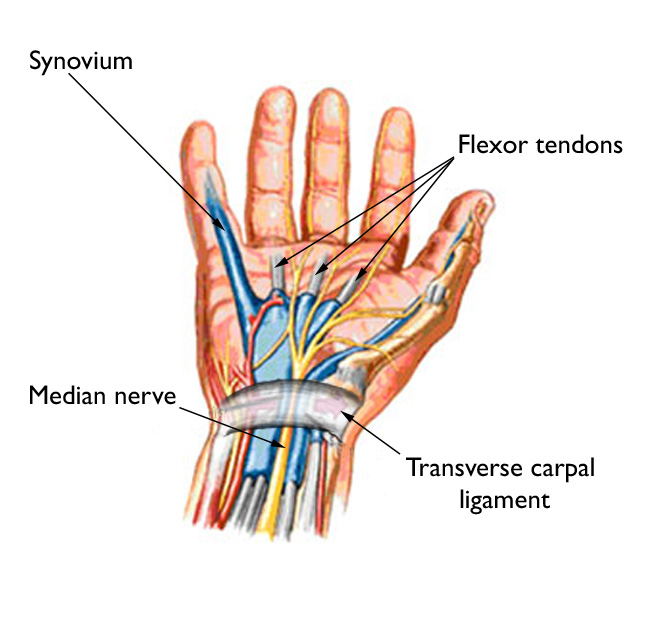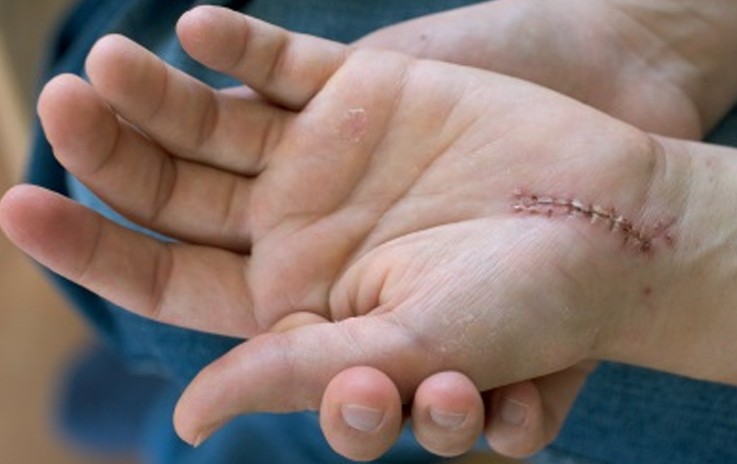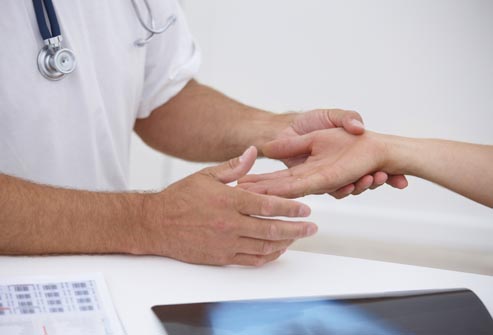How To Tell If You Have Carpal Tunnel Syndrome And What You Can Do To Treat It
It usually starts with a tingle in the thumb or an ache in the wrist.
Did you know that Carpal Tunnel Syndrome (CTS) is on the rise among youths in Malaysia?
In a report by the Malay Mail, hand and microsurgeon Dr. Terence Tay said that more and more youths are suffering from Carpal Tunnel Syndrome (CTS), a disease that usually affects the elderly and those doing repetitive manual work.
The reason?
The ubiquity of smartphone usage, especially on instant messaging platforms and social media.
“This is especially when they use their thumbs on the touch screens and send over 200 messages daily."
Based on his records, Dr. Tay said persistent texting via apps WhatsApp and Facebook Messenger has led to about 30% increase of CTS cases in the last decade.
"The repetitive action and the awkward positioning increase the pressure at the base of the thumb, making them more prone to CTS. This is especially when they use their thumbs on the touch screens and send over 200 messages daily," the specialist said.
What is Carpal Tunnel Syndrome?
The carpal tunnel itself is a tunnel in the wrist made up of bony structures that are the base and walls, with a roof constructed of a dense fibrous sheet called the flexor retinaculum.
Through this tunnel courses a bundle of nerves, blood vessels, and tendons that are the cables of supply to the hand. The syndrome is a result of pressure on the all-important median nerve that travels through this space-limited tunnel.
What causes CTS? And what are the symptoms?
As mentioned above, the pain in your carpal tunnel is due to excess pressure in your wrist and on the median nerve which can cause inflammation and swelling.
Common causes include poor positioning of your wrists while using your keyboard or mouse, prolonged exposure to vibrations from using hand tools or power tools, any repeated movement that overextends your wrist, such as typing or using a smartphone.
Symptoms most often occur in the thumb, index finger, middle finger, and half of the ring finger. Some patients experience pins-and-needles sensation in addition to numbness.
Sufferers may experience sharp pain and numbness that wakes them at night. Shaking the hand might help it settle, but not always. At its most severe, the hand may be weak, holding things is difficult, lifting things is out of the question.
Who's at risk of getting CTS?
Carpal tunnel syndrome is generally more common in women, especially during pregnancy. This is due to increased fluid in the body of a pregnant woman which increases the pressure in the carpal tunnel.
Malaysian Orthopaedics Association president Datuk Dr. Badrul Shah Badaruddin said office workers are also at risk.
“CTS is more common for those patients who do a lot desk work especially involving typing (in a long period of time without rest)," said Dr. Badrul.
What can I do to prevent myself from getting CTS?
Reduce your force and relax your grip. Most people use more force than needed to perform many manual tasks. If you work in front of a computer, press on the keyboards gently.
Avoid bending your wrist all the way up or down. A relaxed middle position is best. If you use a keyboard, keep it at elbow height or slightly lower.
Incorrect posture can cause your shoulders to roll forward. When your shoulders are in this position, your neck and shoulder muscles are shortened, compressing nerves in your neck. This can affect your wrists, fingers and hands.
Lastly, try to keep your hands warm and always take breaks!
What can I do if I have CTS?
There are several options for treatment. A wrist splint can be helpful - it supports your wrist and reduces trauma to the nerve. Different medications and a local steroid injection to help with the pain can also be useful.
Alternatively, you can do more wrist stretches to help ease the stress and pressure. You can check out these stretches here.
If your condition doesn't improve, your specialist might recommend you to go for a carpal tunnel release surgery. The simple procedure aims to relieve stress and pressure on the nerves in the tunnel.
It is normally conducted under local anaesthetic and is one of the most commonly performed hand surgeries.
Will I recover from CTS?
In some cases, CTS disappears without treatment, or the symptoms reduce by introducing simple self-care measures like stretches. Surgery relieves the symptoms of CTS immediately. People with severe nerve damage can take a while to recover, or there may not be any improvement.
Depending on which hand was operated on and what your job involves, you'll usually be able to return to work within a few weeks of surgery.
For more information, we recommend consulting your doctor.
Take care, guys! Always remember to take breaks in between work and play! Don't get too attached to that computer and smartphone. :)










